Papers by Miguel Geraldes
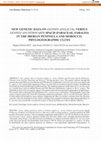
New genetic data on Genista anglica L. versus Genista ancistrocarpa Spach (Fabaceae, Fabales) in ... more New genetic data on Genista anglica L. versus Genista ancistrocarpa Spach (Fabaceae, Fabales) in the Iberian Peninsula and Morocco. Phylogeographic clues. The genetic analysis through the nuclear ribosomal DNA of some Iberian and NW Morocco populations of Genista ancistrocarpa Spach and G. anglica L. has validated the separation of these two sister taxa as two distinct genetic entities, strengthening the already described morphological differentiation. The studied populations neatly show the G. ancistrocarpa as a coastal taxon with occidental Iberian and NW Morocco distribution, contrary to the G. anglica. The distribution areas of the two species appear to be distinct and with an important biogeographical significance. The coastal clade is determined by populations of G. ancistrocarpa, and outlines a biogeographic region that seems to depart genetically from the remaining peninsular populations, also in several molecular analyses of other plants and animals by many authors, support...
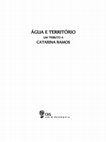
Água e Território: um tributo a Catarina Ramos, 2019
Peat-rich heathlands, characterized and dominated by Ericaceae and Genisteae, are the southernmos... more Peat-rich heathlands, characterized and dominated by Ericaceae and Genisteae, are the southernmost outliers of the class Calluno-Ulicetea in the Mediterranean region. They occur in small and isolated patches along the Atlantic façade of the SW Europe on acidic soils with peat formation and on hydromorphic podzols. Such sites could have acted as refugia for hygrophilous plant during dry climatic phases in earth history. Recent phylogeographic studies of the Genista anglica-ancistrocarpa complex showed a clear separation of a clade, distributed in Western Europe and the Northern Iberian Mountains (Genista anglica), and a clade of SW-Iberian and NW-Moroccan distribution (G. ancistrocarpa) indicating long-term isolation (possibly since the end of the Tertiary) upcoming form intricate paleogeographic and paleoclimatic patterns. In order to access if such long-term patterns are nowadays traceable at the community level, we analysed all the available data of the Genistion micrantho-anglicae from the Iberian Peninsula and NW Morocco.
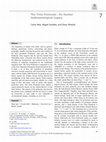
World Geomorphological Landscapes, 2020
The integration of studies from fields, such as geomorphology, palynology, history, archaeology a... more The integration of studies from fields, such as geomorphology, palynology, history, archaeology and phytogeography, enables assessing the genesis and evolution of the most prominent Portuguese sand spit-the Tróia Peninsula. Data suggests that the spit has formed from Grimaldian dunes converted into barrier islands during the Holocene transgression, and coalesced by the accumulation of sediments transported by the northbound longshore drift. The Tróia Peninsula is integrated in one of the most important Portuguese natural protected areas. It holds a set of flora and vegetation of paramount relevance towards protection and conservation in accordance with the Natura 2000 Network. Its position acts as a barrier against the Atlantic Ocean, having allowed the development of the Sado estuary lagoon, which contains mud flats and salt marsh ecosystems, habitats for a wide range of flora and fauna, some of which with special protection status. The Tróia Peninsula forms indeed a natural protective barrier for the Natural Reserve of the Sado Estuary. The genesis of the peninsula, discussed in the present work, combined with the fact that it is made up exclusively of sand, make it very vulnerable to environmental changes, including sea level rise.
City & Community, 2017

Leisure Studies, 2016
Nightlife economic activity has emerged as a key strategy in the regeneration of historical quart... more Nightlife economic activity has emerged as a key strategy in the regeneration of historical quarters. The case of the Bairro Alto district (Lisbon) exhibits a more gradual and distinct development caused by the marginal and transgressive practices of nightlife visitors, who have resisted its gentrification for decades. Some areas in the Bairro Alto (specially the upper side) have maintained their dangerous character and marginalisation for several years, even after the 2008 urban reform programme. It is only recently, with the growing presence of Erasmus students in Bairro Alto, that the upper side has finally become safe and sanitised through leisure activities. In this article, the interplay of several social actors (foreign students, municipal authorities, night-time entrepreneurs and Erasmus organisers) explains the process of place-making regarding the new Erasmus Corner. The spatial colonisation of this spot has accelerated social cleansing of the upper side of the neighbourhood, concluding the district's night-time pacification.

RESUMO Nas últimas décadas o fenómeno da inovação tem sido um forte modelador do território, trad... more RESUMO Nas últimas décadas o fenómeno da inovação tem sido um forte modelador do território, traduzindo diferentes dinâmicas. Expõe-se um projeto de seminário da licenciatura em Geografia, em que foram analisados e discutidos os modelos de inovação e o seu impato, propondo o recurso a um caso de estudo: o tecnopolo de Adlershof, em Berlim. Visou-se a compreensão do tecnopolo com variáveis extraídas da perspetiva subjetiva dos empresários. A criação de inovação e a transferência tecnológica para o tecido empresarial não se confina com a rigidez de uma estrutura de orientação top-down, como é a de um tecnopolo, embora este possa ter efeitos positivos. ABSTRACT FROM TECHNOPOLES TOWARDS THE NEW GEOGRAPHIES OF INNOVATION SYSTEMS: THE EXAMPLE OF BERLIN-ADLERSHOF. In recent decades, the phenomenon of innovation has proved a powerful shaper of the territories, reflecting different dynamics. A research project based on the final work of the degree in Geography is presented, in which the mode...
Tuesday September 13th 9h-Registration 12h-Opening Ceremony 1 st International Symposium of the F... more Tuesday September 13th 9h-Registration 12h-Opening Ceremony 1 st International Symposium of the FIP 13h-Opening Session Salvador Rivas-Martínez Worldwide Bioclimatic Classification System: cartographic expression Carlo Blasi Modern perspectives for plant sociology 14h-Lunch 15h-Poster Session 16h-1 st Symposium: Ecosystem services: the role of vegetation, ecological mapping and land use Chairman: Jorge Capelo 16.15h-Speaker: Miguel Sequeira BRINGING TOGETHER VEGETATION SCIENCE, ECO-TOURISM AND CONSERVATION TOWARDS SUSTAINABILITY IN THE LAURISILVA OF MADEIRA 17h-Coffee break 17.15h-Oral Contributions: Updating, results and potential applications of the indexes system for the evaluation of agroecosystem's functionality
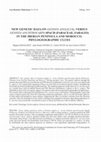
New genetic data on Genista anglica L. versus Genista ancistrocarpa Spach (Fabaceae, Fabales) in ... more New genetic data on Genista anglica L. versus Genista ancistrocarpa Spach (Fabaceae, Fabales) in the Iberian Peninsula and Morocco. Phylogeographic clues. The genetic analysis through the nuclear ribosomal DNA of some Iberian and NW Morocco populations of Genista ancistrocarpa Spach and G. anglica L. has validated the separation of these two sister taxa as two distinct genetic entities, strengthening the already described morphological differentiation. The studied populations neatly show the G. ancistrocarpa as a coastal taxon with occidental Iberian and NW Morocco distribution, contrary to the G. anglica. The distribution areas of the two species appear to be distinct and with an important biogeographical significance. The coastal clade is determined by populations of G. ancistrocarpa, and outlines a biogeographic region that seems to depart genetically from the remaining peninsular populations, also in several molecular analyses of other plants and animals by many authors, supporting the idea of a distinct evolution from the Miocene onwards, when the installation of dry and hot conditions has pushed the moisture-dependent populations of G. ancistracarpa toward the westernmost sectors of Iberia and Morocco with an atlantic influence.
Finisterra Revista Portuguesa De Geografia, 2011
Ordenamento do território da Universidade de Lisboa (iGOt-UL) e organizado pelo Centro de estudos... more Ordenamento do território da Universidade de Lisboa (iGOt-UL) e organizado pelo Centro de estudos Geográficos (núcleo CliMa-CeG). O desígnio deste acontecimento foi de promover e divulgar um novo campo da Geografia, a filogeografia, através da ...
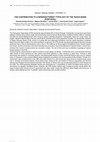
The Portuguese Tagus Basin (PTB) represents approximately 28% of inland Portugal. Climatically, i... more The Portuguese Tagus Basin (PTB) represents approximately 28% of inland Portugal. Climatically, it presents an asymmetry between northern and southern areas, the former being more humid and influenced by Cordillera Central (1993 m), whereas the latter are clearly Mediterranean with a long dry season (Alentejo peneplain). Geologically, there are 3 major areas: the largest, Hesperic Massif (HM) in the east, dominated by granites and a schist-greywacke complex; the downstream lowlands of Tagus Cenozoic Basin (TCB), which is of sandy-clay and carbonate formations; and the mainly limestone Lusitanian Meso-Cenozoic Basin (LMB) in the west-northwest. In general, the PTB climate and geomorphological diversity promote perennial rivers in the N and temporary ones in the S. The LMB has its fluvial regime controlled by karst. Human impacts are ancient, yet the rural exodus over recent decades has promoted a natural reinstatement of riparian forests in some rivers, whereas the invasion of exotic plants has occurred in others. The aim of this work was to establish a typology of riparian forests present in the PTB. Concerning this, natural forests of riparian corridors can be typified, as follows: 1) Perennial rivers: channel banks that have alder forests of Alnus glutinosa at slow waters and willow galleries of Salix salvifolia in rapid ones. Forests of Salix atrocinerea also appear in mountain streams, and willow-poplar forests of Salix neotricha/Populus nigra occur in lowland rivers. 2) Temporary rivers present different types of galleries according to the dryness period of the riverbed. Forests of S. neotricha/P. nigra, predominate on the LMB, and willow forests of S. atrocinerea are mainly found on lowland sandy areas and S. salvifolia at torrential streams. At the driest areas, namely E-SE, ash forests of Fraxinus angustifolia and Tamarix africana and Fluggea tinctoria thickets dominate. Elm forests of Ulmus minor are occasionally present in small streams on the LMB. The most-spreading floodplain forests are dominated by F. angustifolia on rather inundated zones and by S. atrocinerea on regularly inundated zones. However, the PTB riparian forests were invaded by exotic woody plants: the major invaders were Arundo donax in agricultural and urban areas, mostly the LMB and Lisbon Region and Acacia sp. in forestry areas affected by fires. In addition, exotic Salicaceae were another problem.
Quaternary Science Reviews, 2016

Abstract This research analyzes the deglaciation of the Western Massif of Picos de Europa and the... more Abstract This research analyzes the deglaciation of the Western Massif of Picos de Europa and the postglacial environmental evolution based on field observations, geomorphological mapping, sediment cores and radiocarbon datings. Four main glacial stages have been identified: (1) maximum advance corresponding to the Last Glaciation, (2) internal phase, (3) Late Glacial, and (4) Little Ice Age. We have also been obtained minimum ages of 18,075 ± 425 cal BP for the maximum advance stage and 11,150 ± 900 cal BP for the stage 2. The progressive deglaciation of the massif was accompanied by an increase in altitude of the periglacial belt and more paraglacial activity. The detailed study of sedimentary records will reveal the environmental conditions prevailing since the deglaciation. Keywords: Glacial stages, Postglacial environmental evolution, Periglacial processes, Paraglacial dynamics, Absolute datings, Picos de Europa.
Os ecossistemas dunares caracterizam-se por uma grande diversidade de situações microclimáticas, ... more Os ecossistemas dunares caracterizam-se por uma grande diversidade de situações microclimáticas, que se diferenciam na interface atmosfera-solo-vegetação, e se justificam pela actuação de dois grandes conjuntos de variáveis, respectivamente relacionadas com os biótopos e com o biota: a) Variáveis físicas (ou biotópicas): declive, exposição, altitude, distância ao mar, forma das acumulações arenosas, composição granulométrica e mineralógica das areias; b) Variáveis de natureza biológica (bióticas): densidade das formações vegetais, altura dos vegetais, morfologia das folhas e restantes órgãos aéreos, estádio de crescimento, fase fenológica, quantidade de matéria orgânica no solo C.
RESUMO Nas últimas décadas o fenómeno da inovação tem sido um forte modelador do território, trad... more RESUMO Nas últimas décadas o fenómeno da inovação tem sido um forte modelador do território, traduzindo diferentes dinâmicas. Expõe-se um projeto de seminário da licenciatura em Geografia, em que foram analisados e discutidos os modelos de inovação e o seu impato, propondo o recurso a um caso de estudo: o tecnopolo de Adlershof, em Berlim. Visou-se a compreensão do tecnopolo com variáveis extraídas da perspetiva subjetiva dos empresários. A criação de inovação e a transferência tecnológica para o tecido empresarial não se confina com a rigidez de uma estrutura de orientação top-down, como é a de um tecnopolo, embora este possa ter efeitos positivos. ABSTRACT FROM TECHNOPOLES TOWARDS THE NEW GEOGRAPHIES OF INNOVATION SYSTEMS: THE EXAMPLE OF BERLIN-ADLERSHOF.

Uploads
Papers by Miguel Geraldes